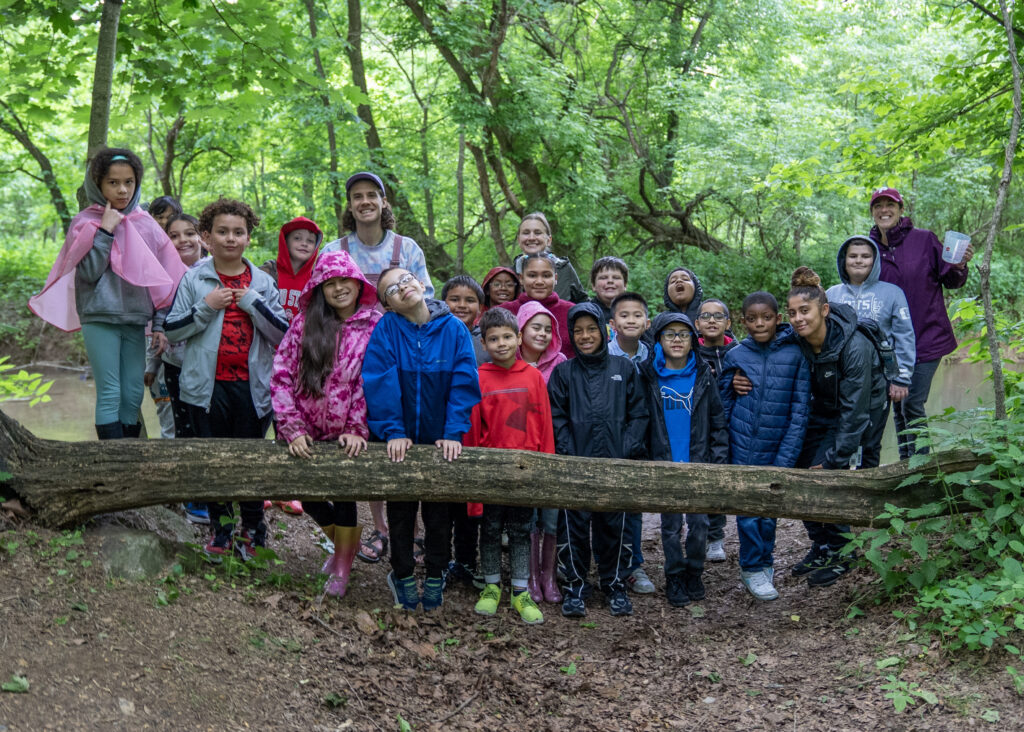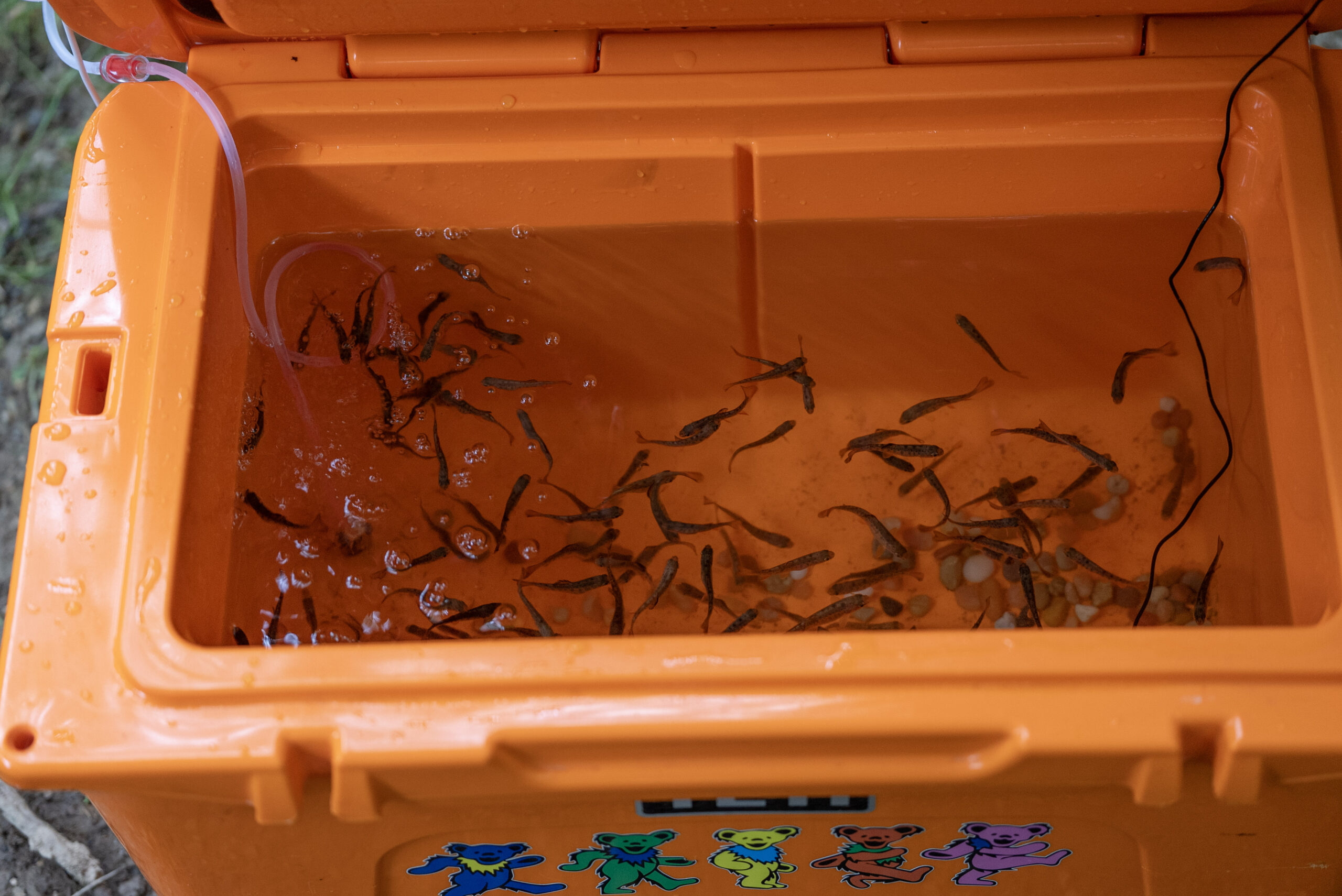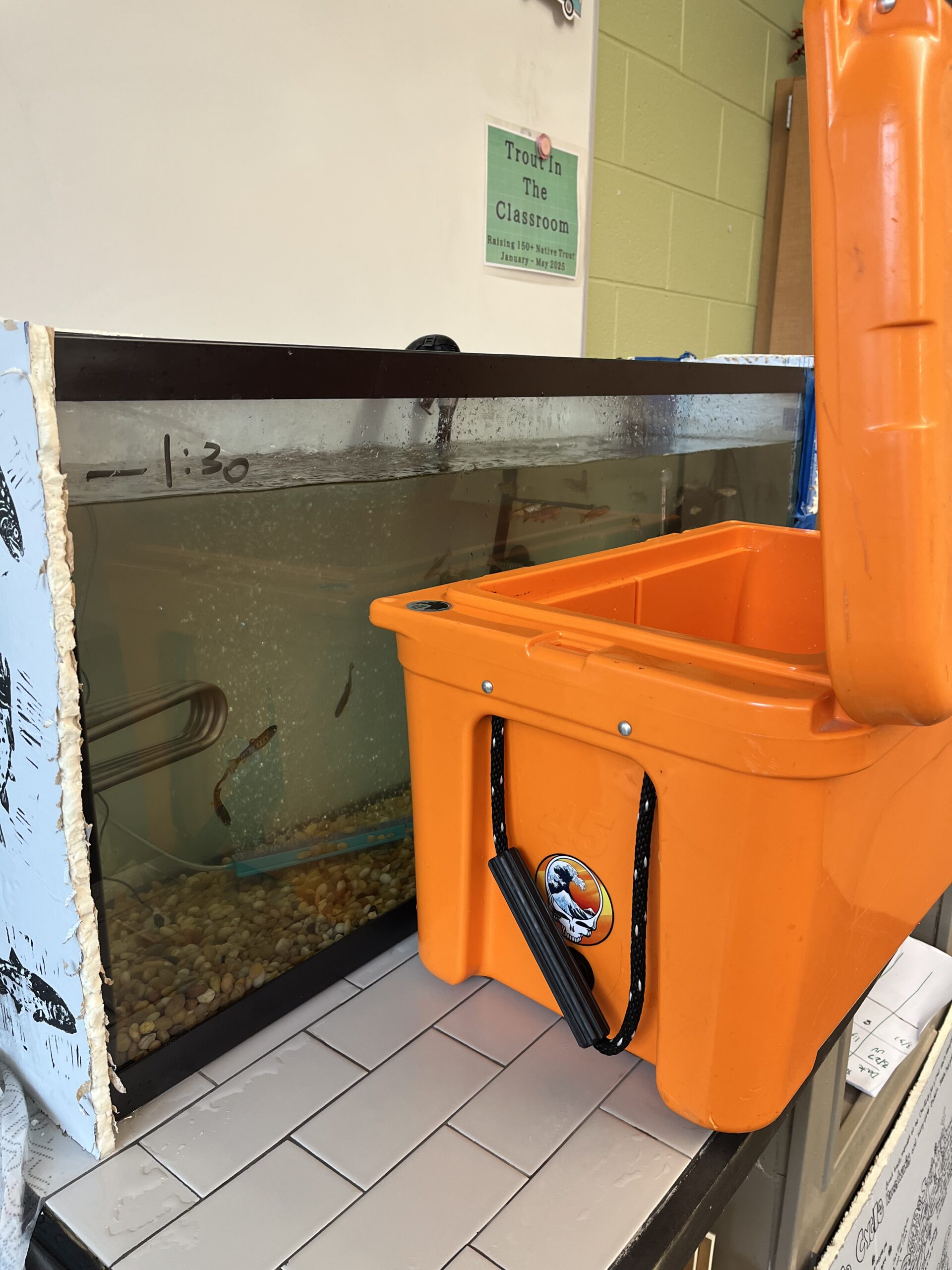
At Wickersham Elementary School, science class looks a little different. Alongside notebooks and pencils, there’s a humming filtration system, bubbling water, and dozens of tiny rainbow trout growing steadily in a classroom aquarium. Thanks to the Pennsylvania Trout in the Classroom (PA TIC) program, Wickersham students are learning about ecosystems, environmental responsibility, and the life cycle of coldwater fish not through videos or worksheets, but by raising trout from eggs to fingerlings and releasing them into a local stream.
This year marks Wickersham’s first participation in PA TIC, a statewide environmental education initiative made possible through a partnership between the Pennsylvania Fish and Boat Commission (PFBC) and the Pennsylvania Council of Trout Unlimited (PATU). Teachers Taylor Pfaff and Sophie Dodge led the effort to bring the program to their school. Their inspiration came from Wharton Elementary, where Pfaff’s partner, Kelsey, had already established the program with support from John Van Wyngarden, another district educator.
“It was clear how impactful this kind of hands-on science could be for our students,” said Pfaff, a learning support teacher. “We saw an opportunity to bring something meaningful to our classroom, something that would engage students not just academically, but emotionally and socially as well.”
With help from Donegal Trout Unlimited, Wickersham received a complete tank setup including temperature regulation equipment, filtration systems, and monitoring tools. The PFBC provided fertilized trout eggs, giving students the opportunity to observe and document the trout’s development day by day, from translucent eggs to wriggling alevins to fingerlings ready for release. By mid-April, Wickersham released their first group of 41 rainbow trout into Chickies Creek, a state-approved stocked waterway. A second group was released following a final round of observations and care in May.

But what makes Wickersham’s version of the program stand out is how deeply it includes students with special education needs. Pfaff’s classroom, which supports learners from kindergarten through fifth grade, has taken an active role in raising the trout alongside a general education third-grade class taught by Sophie Dodge.
“The students in our learning support classroom are incredibly invested,” Pfaff shared. “They’re responsible for monitoring water quality, observing fish behavior, recording changes in science journals, and helping maintain the tank. It’s become a daily routine that gives them ownership of something that’s alive and constantly changing. That kind of engagement can be hard to replicate.”
To make the experience even more accessible, Pfaff reached out to McCaskey High School’s Building Trades CTE Program. Under the guidance of teacher John Cooper, high school students built a custom table for the tank, designed specifically for ease of access for students who benefit from physical accommodations.

The learning doesn’t stop at fish care. The program ties directly into Pennsylvania’s Environment and Ecology standards, especially for third grade. Students are learning about aquatic adaptations, food chains, habitats, and human impact on natural resources. They’re writing about their experiences, applying math to track growth and temperature changes, and reflecting on how ecosystems function and why it matters to protect them.
“Students are introduced to scientific practices in a real, observable way,” Dodge noted. “When we talk about life cycles or ecosystems, they’re not just abstract concepts. They’re watching these processes happen right in front of them. It’s active learning at its best.”
Beyond academic connections, the project has sparked a schoolwide ripple effect. Other classrooms, including pre-kindergarten and fifth grade, have visited the trout setup to learn more. Teachers have used the tank as a conversation starter about conservation, environmental responsibility, and even topics in art and storytelling. The entire school community has rallied around the fish, watching their progress and celebrating milestones.
The release days are particularly emotional. Students travel to the creek, learn about the local watershed, and then gently introduce their trout into their new habitat. “It’s a powerful moment,” said Pfaff. “The kids know they’ve helped these fish survive and now they’re letting them go. It teaches responsibility, empathy, and a connection to the natural world.”

Statewide, PA TIC continues to grow. Launched in 2006 with just a handful of classrooms, the program now includes over 400 across Pennsylvania. Each classroom adapts the curriculum in its own way, but all share a common goal: to create meaningful connections between students and their local watersheds.
At Wickersham, the experience is shaping future plans. Both Pfaff and Dodge are committed to continuing the program next year, building on what they’ve learned and expanding the opportunities for more students to get involved. They hope to deepen cross-curricular ties, integrate more writing and reflection, and explore additional ways to link environmental education to broader learning goals.
“This program allows students to connect with science in a real, emotional, and memorable way,” said Pfaff. “They’re not just learning about the environment, they’re becoming caretakers of it.”
For more information about the Pennsylvania Trout in the Classroom program, including curriculum resources and conservation learning materials, visit www.patroutintheclassroom.org.
#
